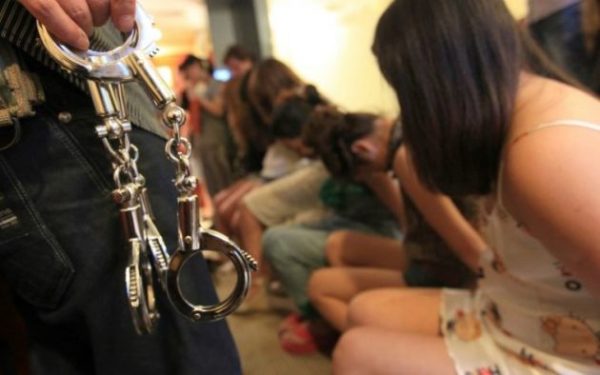

A feminist activist is warning about the systematic push to normalize the sex trade and the work of progressive nonprofits that are guiding politicians on how to obfuscate the harms of child sex trafficking.
Speaking Wednesday morning on a panel about protecting children from sexualization, Natasha Chart, board chair of the Women’s Liberation Front, documented the various ways in which commercial sexual exploitation of minors is being mainstremed. Chart’s story of getting fired in part because she said transgender-identifying males could not be lesbians and for raising objections to the promotion of youth in the sex trade was reported by The Christian Post in April 2018.
Raised a Jehovah’s Witness, Chart was taught that most people were bad. She recounted how she ran away at the age of 17 and shared some of her experiences interacting with a would-be pimp who had attempted to exploit her when she was in a vulnerable place as an angry teenager.
Years later, she was working at far-left social justice organization where she began to see the promotion of “youth sex work” which alarmed her. She started researching more and soon discovered that a considerable part of the nonprofit sector on the left was attempting to make the sex industry respectable.
Chart explained: “In a guide that continues to be recommended to policymakers and feminist activists, called ‘Girls do what they have to do to survive: Eliminating methods used by girls in the sex trade and street economy to fight back and heal’ — this was written in 2009 — by a no longer operating organization called The Young Women’s Empowerment Project. They define their youth audience like this: ‘Girls, including transgender girls, and young women, including transwomen, ages 12 to 23, who have current or past experience with any part of the sex trade and street economies.”
The guide manipulatively makes the case that the ways in which society attempts to remove young girls from the sex trade is inherently harmful to them, including a section about “self-care” where self-harm was framed as somehow beneficial. Cutting and self-injury were described as a “soothing form of self-care” and was thus renamed as “self-harm resilience.” Other forms of such “resilience” girls in the trade had written about included breaking bones and making cuts and burns on their skin.
The guide went on to explain that they used the phrase “harm reduction” as a way to understand this. “Harm reduction” was defined as “that all girls involved in the sex trade need to be in charge of their own decisions.”
“And so just imagine the trauma and the need for help that those words hide,” Chart elaborated, noting how so much of the language obfuscates what is actually being advocated.
“I would submit to you that a young girl who feels that she need to break her own bones to feel in control of her life is maybe not in a state where she doesn’t need anybody’s help,” she said.
Read more from, “Feminist activist warns of push to normalize sex trade, hide harms of child exploitation,” on The Christian Post.